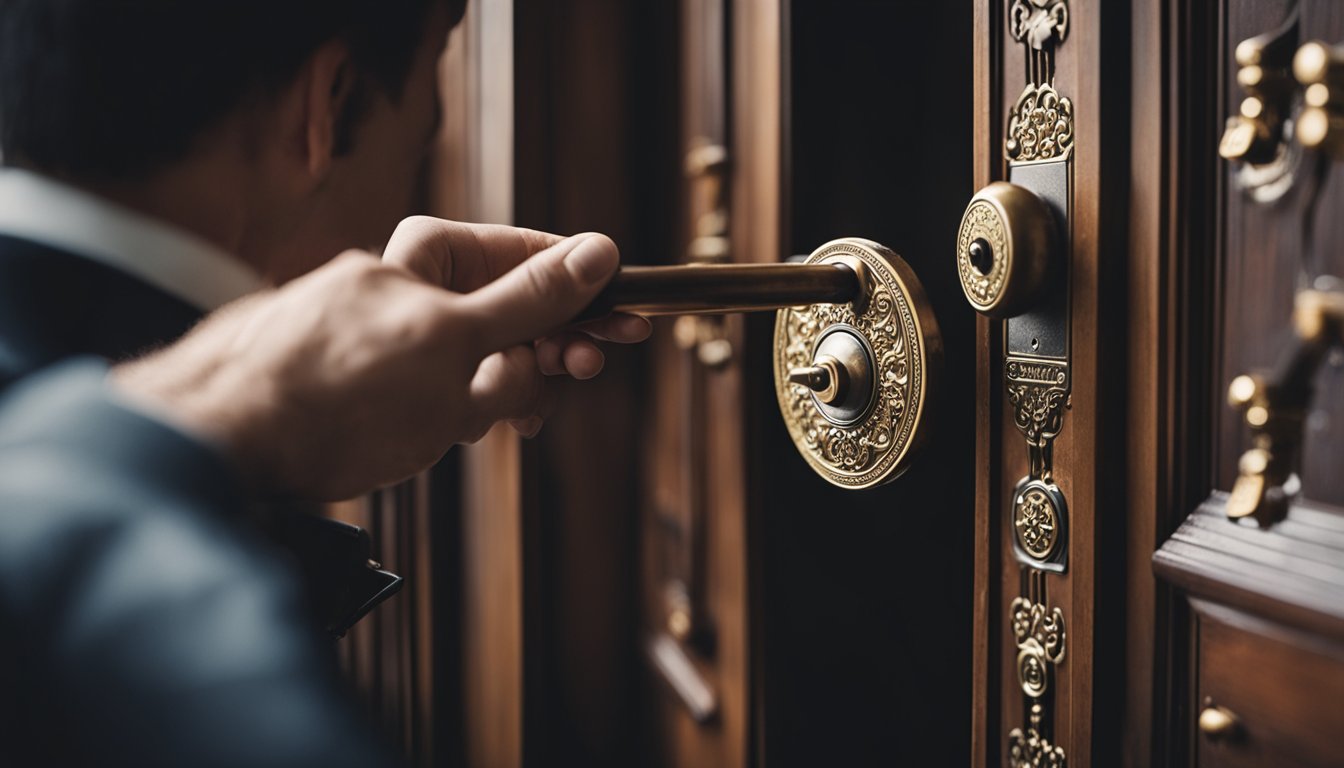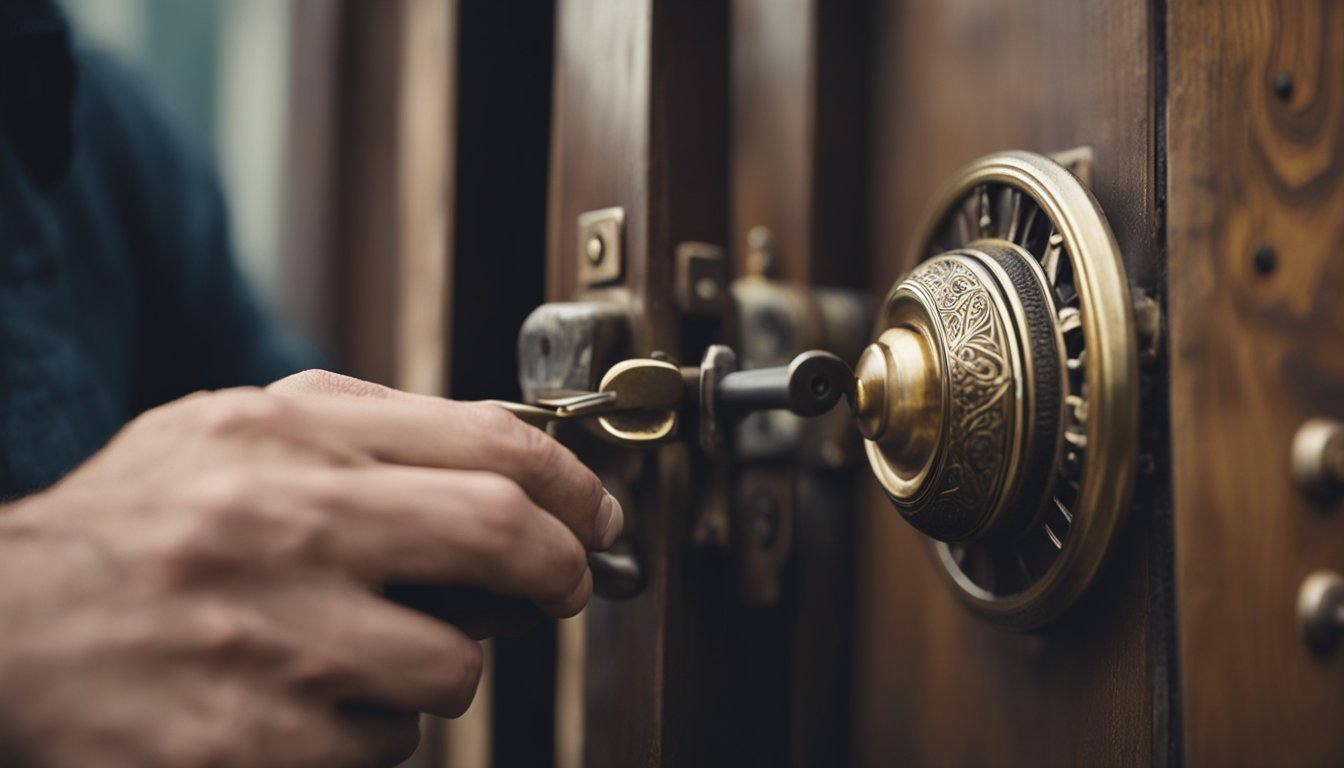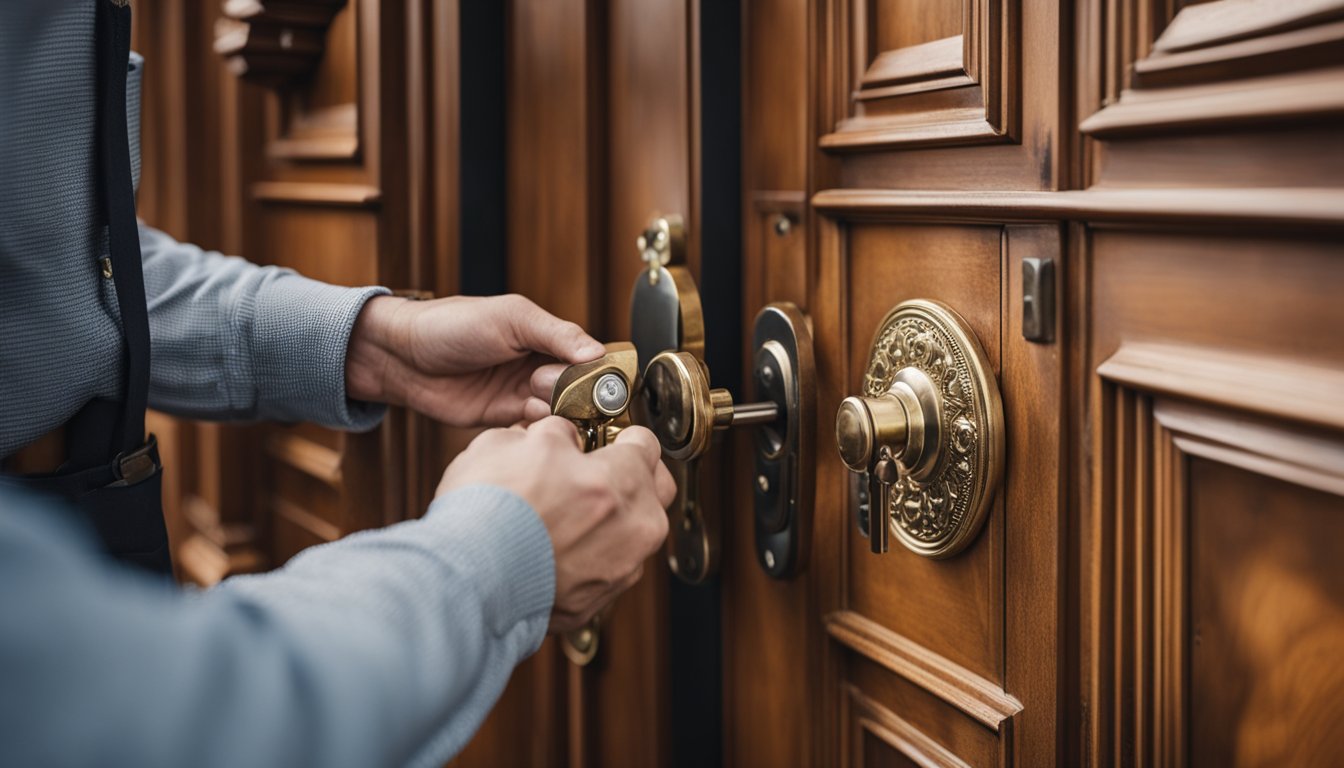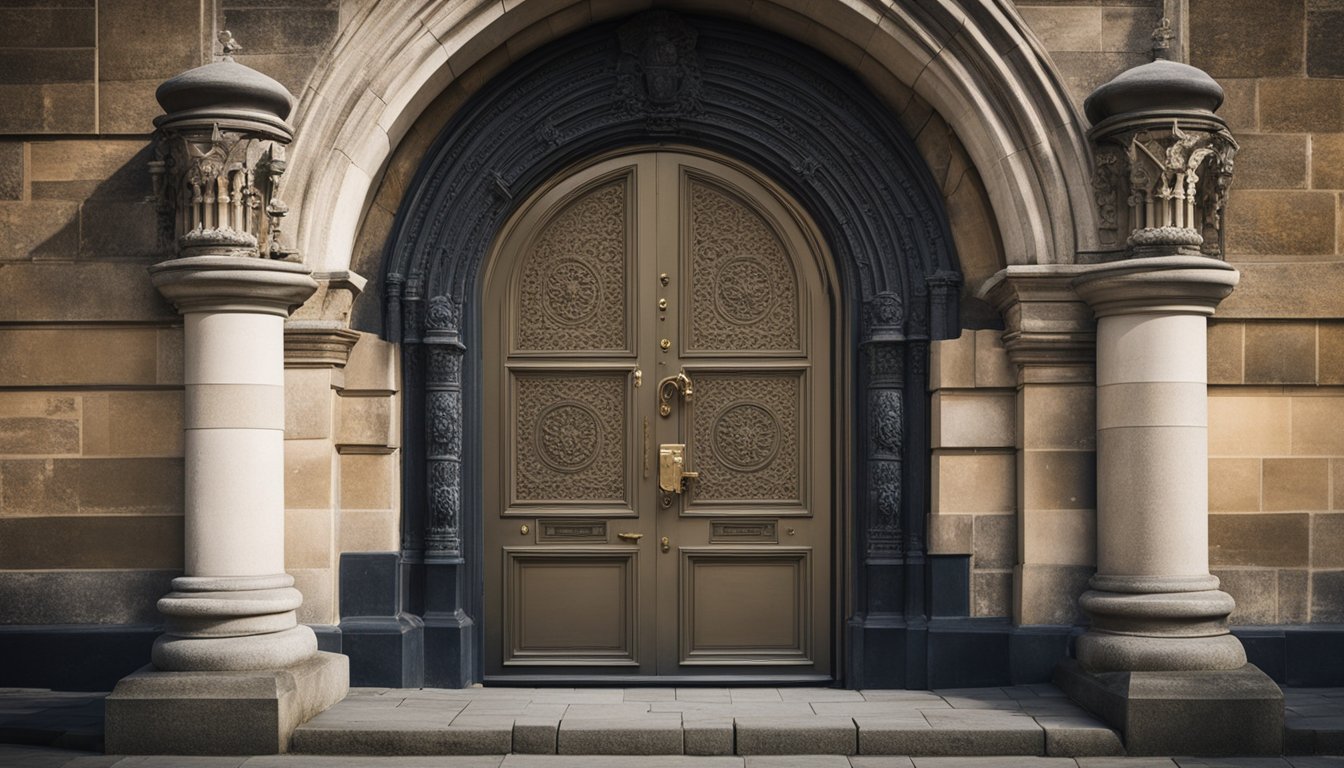Late updated: 06 Feb 2025 15:02
Written by: Elena Prescott
Locksmithing For Historic UK Buildings: Preserving Heritage with Expertise
Locksmithing for historic UK buildings is a fascinating blend of art and science. These buildings, often listed as heritage sites, demand a careful balance between conservation and modern security needs. As custodians of history, we understand the importance of preserving the architectural integrity while ensuring the safety of patrons and the integrity of the building.

Professional locksmiths in this niche field need to have an appreciation and deep understanding of both historical craftsmanship and current security solutions. Expert locksmiths achieve this by employing sensitive techniques that respect the historical character of these structures. Our role is not just about changing or repairing locks; it's about weaving the past with the present, ensuring that modern safety measures don't undermine the historical essence of these treasured buildings.
Engaging with historic UK buildings opens up a world of intrigue and challenge. From restoring antique locks to working with period-appropriate materials, the craft requires a combination of traditional skills and innovative thinking. The secrets hidden within the ancient walls compel us not just to secure, but also to conserve, restoring history one lock at a time.
Key Takeaways
- The blend of art and science underpins locksmithing for historic buildings.
- Restorative techniques respect and preserve historical integrity.
- Modern safety must complement the historical character of heritage sites.
Locksmithing in Historic Building Conservation

In the realm of historic building conservation, locksmithing plays a pivotal role. We must balance modern security with the preservation of historical integrity, ensuring both protection and maintenance of heritage value.
Understanding Historic Locks and Their Mechanisms
Historic locks, often seen in grade-listed buildings, showcase intricate engineering and craftsmanship. Many of these vintage and antique locks feature mechanisms that reflect the technological advancements of their time. Understanding these components is vital, as it allows us to preserve the historical significance while aligning with current safety standards. We often encounter pin tumbler locks, warded locks, and lever locks, each unique and requiring careful attention. By studying their historical context, we appreciate our architectural legacy's depth.
Challenges and Strategies for Repair and Maintenance
Repair and maintenance of historic locks present unique challenges. Over time, wear and tear can degrade these mechanisms, and finding replacement parts for antique systems is often a difficult task. Our strategy involves sourcing vintage materials or creating bespoke components through craftsmanship. Conservation officers frequently collaborate with us to ensure all interventions adhere to strict guidelines. Additionally, a focus on gentle cleaning and minimal invasive techniques keeps the historical value intact while extending the lock's lifespan.
The Role of Locksmiths in Heritage Preservation
As locksmiths, our role extends beyond providing security; we become guardians of heritage. We work closely with conservation officers and building conservation experts to develop solutions that respect the architectural beauty of historic buildings. Restoration efforts encompass careful restoration techniques that maintain aesthetic and historical authenticity. By using non-invasive methods and preserving original materials, we ensure each project contributes meaningfully to maintaining our shared heritage. Our expertise in this niche not only safeguards properties but also honours their cultural legacy.
Enhancing Security and Efficiency in Historic Buildings

In historic UK buildings, it is essential to implement modern security measures and improve energy efficiency while preserving historical value. This requires an understanding of innovative techniques and careful collaboration with conservation experts.
Integrating Modern Security Without Compromising Historical Integrity
When enhancing security in listed buildings, subtlety and respect for the original architecture are paramount. Modern security devices, such as motion detectors and surveillance cameras, can often be hidden within architectural features. Covert technologies allow us to maintain aesthetics while boosting safety.
The choice of secure, period-appropriate locks is vital. Engineers and locksmiths play a crucial role in designing solutions that blend with the era's craftsmanship. Non-invasive methods ensure historical character remains intact. Using technology like wireless systems minimises impact on the building's fabric, offering protection without significant alterations.
Energy Efficiency Solutions for Older Constructions
Achieving energy efficiency in ancient edifices involves careful planning and innovation. Retrofitting older buildings with modern insulation and energy-efficient windows can reduce heat loss. It’s crucial to respect the original design while upgrading, often requiring custom solutions.
Smart heating systems, programmable to optimise energy use, are an excellent addition. These systems are adaptable to fluctuating occupancy, crucial in historical sites with varied visitor patterns. Introducing LED lighting palettes that complement the period style offers another efficiency benefit without detracting from historical charm. Our focus remains on sustainability, reducing both environmental impact and operational costs.
Consultancy and Collaboration with Conservation Experts
The preservation of a building’s historical significance necessitates close coordination with conservation consultants. These experts guide restoration plans, ensuring compliance with UK mandates and architectural conservation standards. Regular consultations help address potential challenges in melding new and old.
Conservation experts assist in creating a maintenance schedule that protects both structural integrity and the building's historical character. Collaborative efforts between engineers, conservationists, and property owners ensure that enhancements align with both the legal requirements and preservation goals. Engaging the expertise of these professionals aids us in balancing innovation with tradition, a crucial factor in successful building restoration.
Frequently Asked Questions

When dealing with locks in historic UK buildings, various aspects such as qualifications, tools, legalities, and best practices play pivotal roles. Understanding these factors is essential for ensuring the preservation of heritage while providing necessary security.
What qualifications are required for locksmithing in historic UK properties?
Locksmiths working on historic UK properties often need specialised training to handle vintage mechanisms. Certification from recognised organisations like the Master Locksmiths Association is often advantageous. These credentials ensure locksmiths are knowledgeable about handling delicate antique systems correctly.
How do locksmiths approach key creation for antique locks?
Creating keys for antique locks involves using traditional techniques alongside modern precision tools. Often, locksmiths must replicate the intricate designs of old locks by hand, ensuring the new keys align perfectly with the aged mechanisms. Special attention is given to preserving the lock's architectural integrity.
What are the legal considerations for working as a locksmith in the UK?
Working as a locksmith, especially in grade-listed or heritage properties, requires compliance with preservation laws. Locksmiths must have appropriate licenses and may need to consult with local authorities to ensure changes do not harm the historic value of the building. Legal guidelines ensure these structures maintain their cultural significance.
What are the best practices for preserving original locks during restoration?
Preserving original locks is crucial when restoring historic properties. Locksmiths undertake detailed assessments, identifying parts that can be repaired rather than replaced. The use of non-invasive techniques is preferred to maintain the original craftsmanship. Continuous consultation with conservation experts helps in maintaining historical authenticity.
How does the cost of locksmith services for historic buildings compare to standard buildings?
Locksmith services for historic buildings often cost more compared to standard properties. This is due to the complexity and care required in handling antique locks. The need for bespoke tools and specialised expertise also adds to the expenses, reflecting the delicate nature of working within a historical context.
What special tools are needed for repairing locks in historic UK buildings?
Specialised tools are vital for repairing locks in historic UK buildings. These may include custom-made picks and levers designed to work with intricate and fragile antique mechanisms. Such tools help locksmiths engage effectively with aged locks, ensuring they do not cause further wear or damage.
